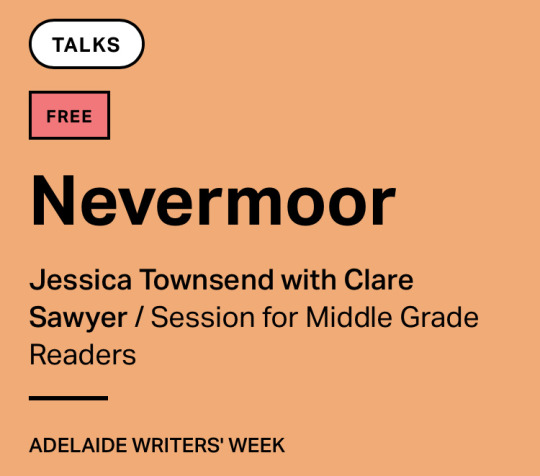#and I’d love to be able to add it to my interview / q&a list / database / whatever
Explore tagged Tumblr posts
Text

Jessica Townsend will be giving a free talk at the Adelaide Festival on March 3rd, as well as signing books!
In 2024, Jessica Townsend will publish the fourth book in her Nevermoor series. What can we expect from the next installment? In this session for middle grade readers, Townsend joins chair Clare Sawyer to reveal some of the secrets of her fantastical world.
#nevermoor#jessica townsend#jess news#I have no clue if it’ll be recorded in any form for folks unable to attend to know what she might say. I emailed asking but lean towards no#sooooo if any nevermoor fans happen to live in Adelaide….. lol#everything’s been so silent that Idk if this would have anything new but I’d love to know literally anything from her abt anything nevermoo#video or notes ….. need someone out there to share it for us non-Australians 😭#and I’d love to be able to add it to my interview / q&a list / database / whatever
27 notes
·
View notes